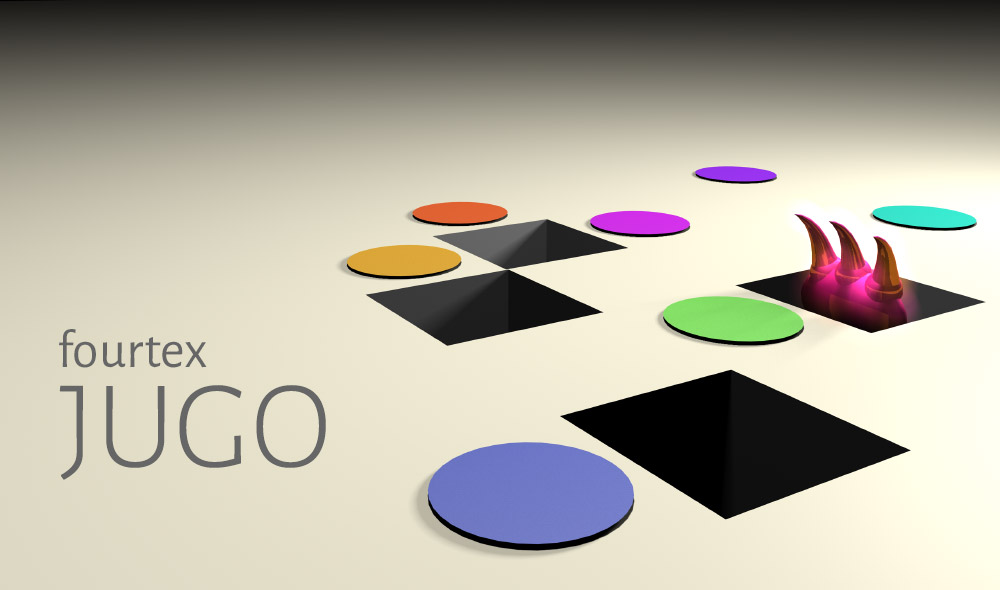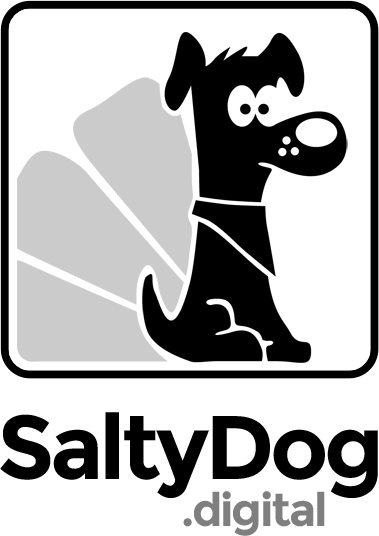Jugo FAQ

Frequently asked questions
What am I supposed to do?
It may help to consider the pieces on the board as particles. There are simple rules for combining particles.
Legal moves must be a combination of horizontally or vertically adjacent particles. In addition, at least one particle must be inside the 4x4 center-region area of grid spaces (the tiles on which the particles are displayed)
Numbered particles combine in two possible ways: any two numbers that are the same can combine to make the next higher numbered particle (1+1=2, 7+7=8, etc.) and any two numbers that add to 15 can combine to make the next type of particle, which we call pie particles. Note that adding 14+14 also makes a pie particle. Pies are identified by a trisected circle symbol or the letter pi. There are three kinds of pie: Cherry circle, Lemon square, Blueberry triangle.
The pie particles can only combine with each other. When they do, the result is the next kind of particle, called a nom particle, which stands for "nominal particle", identified by a solar system/atom symbol or the letter omega. There are two kinds of noms: White circle, and Black circle. There are two possible pie particle combinations: you can add two similar pie particles, in which case you will get a white nom particle, or you can add two different pie particles to get a black nom particle.
The nom particles can only add by combining a white with a black, and the result is a void, representing the most fundamental expression of stuff in the Jugo universe. It is not space, but is not quite empty, not something, not nothing. Or maybe it is nothing. It is where Jugo hangs out. Voids give Jugo an opportunity to interact with you as you play.
What's with the different shapes?
The nom particles are always circles. Each of the three pie particles is always the same shape (blue triangle, red circle, yellow square) and the numbered particles can be any of the three shapes (triangle, circle, square).
When you combine two numbered particles, the resulting shape will be the same shape if both number particle shapes were similar, or the third shape if the number particles were different (so, adding two circle 3 number particles gets you a circle 4, and adding a circle 3 to a square 3 will result in a triangle 4).
This is also the rule that applies when you combine number particles that make a pie particle. So when adding two 14 particles, or adding two number particles that total 15, the kind of pie that results is based on the shapes of the two number particles. Adding a square 14 to a square 14 will result in a square (and therefore yellow, or lemon) pie particle. Adding a circle 6 to a square 9 will give a triangle (and therefore blue, or blueberry) pie particle.
Managing your particle combinations can help you to achieve a good balance of pie particles and ultimately nom particles so that you can make voids, the creation of which gives the highest point value.
Why are some places ("tiles") in the center of the board a different color? How does a level end?
When you combine two particles, the place (or tile) where the new particle is created is highlighted or shaded. The highlight has no effect on movement or combining particles, it is just an indication that a combination (or more than one) happened there.
When all of the 16 tiles in the center of the board have been highlighted, the level will end (after any last move by Jugo, if he has one available) and your final score including any bonus points will be calculated.
Important: after your move, where there is a void, there is no tile (until and unless that void moves to a different tile), so only the tiles you see count. If the 16 center-region tiles of your board were all voids after your move, the level would end, because there would be no un-highlighted tiles left.
A level also ends if you have no moves available on the board, before you have highlighted all visible center-region tiles. In this case, the level is not considered complete, and while technically there is no winner, any points you made are confiscated by Jugo. If you complete the level and have more points than Jugo, you win. If you have the same or less points, Jugo wins.
What good is a void? What are the claw things that appear in the void spaces?
In Jugo's universe, everything comes from nothing. So if you like everything, or even anything, you can blame nothing for that.
Note that you can deliberately move one of your particles into a void (a "sacrifice") to change the board and extend the game. On some levels, you will probably need to do this to finish the level, until you become an expert-- and then you may need to do it if you are going for a high score. On other levels, you may not need to, if you planned ahead.
You can make moves across one or more consecutive voids as if they were not there. This is sometimes useful.
As for the claw things, we call the claw things claws. They are tricky. They only like the nicer, higher-value particles (pie particles and nom particles). After your move, if any of these are adjacent to a void (in the cardinal directions, i.e. in the same row or column and not including diagonals), the claws will warm up a little, and become more visible, each turn. If no voids have these particles adjacent any claws that are warm will cool a little each turn. If one or more claws get fully heated (purple) and visible, one of them will grab an adjacent pie or nom particle if they can, after your next turn. It will usually (okay, always) be the best one they can find. They like noms best, and black noms a little better than white noms, and they like pie particles in this order: blueberry/blue best, then lemon/yellow, then cherry/red.
Note that claws can move to any void space after your move. Unbelievable.
When the claws do have a move it always happens immediately after your move. The claws do get a chance for a last move, if your last move completes the level.
What about the scoring?
- Making a number particle gives you (10 times the new number particle) points
- Making a pie particle will give you 1,500 points
- Making a nom particle gives you 15,000 points
Creating a void will result in 150,000 points
Sacrificing any particle into a void removes 150,000 points. If your score goes to zero and more points remain to be deducted, those points go to Jugo
A grab by Jugo is a double score of 150,000 plus the value of the grabbed particle. That total score amount is both deducted from your score, and added to Jugo's score. For the deduction, the same rule applies as for a sacrifice: if your score goes to zero the remaining deduction points go to Jugo).
At a successful level completion you get bonus points for any pie and nom particles left on the board's play areas (all tiles except the outermost), whether you created them or not: 1,500 for each pie and 15,000 for each nom.
Winning a complete level gets you a star. Winning and also reaching the Target Score (the number next to the level name) gets an additional star. If you can win with the target score without a sacrifice or grab, you get a third star, for playing a perfect game. All levels in the campaign can be perfect games.
